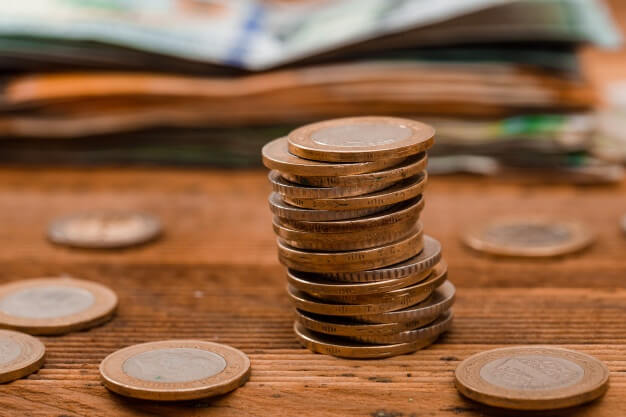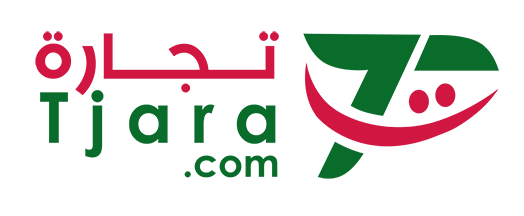Contents
The https://forex-trend.net/ can be estimated using the technique of measuring the distance from the right peak of the cup to the bottom of the cup and extending it in the direction of the breakout. A common stop level is just outside the handle on the opposite side of the breakout. The Inverted Cup and Handle is the bearish version that can form after a downtrend. TradingView has a smart drawing tool that allows users to visually identify this pattern on a chart.
Once a cup and handle pattern forms, in order to generate a bullish trade signal, the price must break above the top of the handle that has formed. The cup and handle pattern is a formation on the price chart of an asset that resembles a cup with a handle. As its name implies, the pattern consists of two parts — the cup and the handle. Further down in the article we have several charts to show how it looks like in a chart. The inverted cup and handle pattern consists of an inverted cup and a handle. The inverted cup is like a dome with a rounded top and forms after a price decline, with the height about 30-50% of the decline preceding it.
If you look at the regular cup and handle pattern, there is a distinct ‘u’ shape and downward handle, which is followed by a bullish continuation. This means the inverted cup and handle is the opposite of the regular cup and handle. Instead of a ‘u’ shape, it forms an ‘n’ shape, with the handle bending slightly upwards on the chart.
- We’ve mentioned it several times, but our guide tobacktestingand how tobuild a trading strategy are excellent resources that will help combat this issue.
- Following his principles, traders using the pattern should place a stop buy order slightly above the upper trendline of the handle part of the pattern.
- The cup and handle tells you that the price will continue with its bullish trend.
There should be a substantial increase in volume on the breakout above the handle’s resistance. Alternatively, you place a stop buy order slightly above that upper trend line. Sometimes, it is prudent to wait for a breakout above the resistance line established by the highs of the cup. Volume should decrease during the formation of the pattern, but there should be a spike when the breakout/breakdown happens after the handle formation.
Introducing OptionsTrader by IBD
The buy point occurs when the stock breaks out or moves upward through the old point of resistance . Opponents of the V-bottom argue that prices don’t stabilize before bottoming and believe the price may drop back to test that level. But, ultimately, if the price breaks above the handle, it signals an upside move. Sometimes, the left side of the cup is a different height than the right. Use the smaller height and add it to the breakout point for a conservative target. You could also use the larger height for an aggressive target.

If the handle drops below the lower half of the cup, it is no longer a ‘cup and handle’ pattern. In most cases, the handle should not dip below the top third of the cup for it to be a cup and handle pattern. It then finds some support and moves upwards again and finds resistance around the 50% retracement. It then moves downwards and forms an inverse of a cup, rises slightly and then continues falling.
How to identify the cup and handle pattern
Discover the range of markets and learn how they work – with IG Academy’s online course. DTTW™ is proud to be the lead sponsor of TraderTV.LIVE™, the fastest-growing day trading channel on YouTube. Also, the right side of the cup should always come nearer to the previous high point. Finally, the handle should move lower to about half of the top of the handle. Second, the cup section should look like a U even from a distance.
As with most chart patterns, it is more important to capture the essence of the pattern than the particulars. The cup is a bowl-shaped consolidation and the handle is a short pullback followed by a breakout with expanding volume. A cup retracement of 62% may not fit the pattern requirements, but a particular stock’s pattern may still capture the essence of the Cup with Handle.
The https://en.forexbrokerslist.site/ of the asset is expected to drop after the pattern formation is complete. A rounding bottom is a chart pattern used in technical analysis that is identified by a series of price movements that graphically form the shape of a “U.” The reasoning behind this explanation is that the breakout move requires strong volume after the necessary quiet period to form both the cup and the handle. You can’t find a more quite time to trade the markets than late afternoon when everyone is off at lunch or have finished trading for the day.
How this indicator works
William O’Neil’s CANSLIM method shows better perhttps://topforexnews.org/ance than the overall market (S&P 500) in backtests, even though it has lagged in recent years. Although we might argue O’Neil is the innovator of the cup and handle strategy, it’s just one part of many in his methodology. We can’t conclude on the profitability of the cup and handle strategy based on the CANSLIM method. You can see the cup and handle pattern that formed between 2005 and 2007. As the price on the right side approaches the left cup level, the last holders will finally decide to cut their losses and there will be a large volume sell-off. This is the point at which the pivot forms, and marks the end of the recovery stage.

There are several ways to approach trading the cup and handle, but the most basic is to look for entering a long position. The image below depicts a classic cup and handle formation. Place a stop buy order slightly above the upper trend line of the handle.
What is the cup and handle pattern?
The Cup and Handle pattern can form in any timeframe, but as a swing trader, you should focus on the daily timeframe. To identify the Cup and Handle pattern or the inverse type, you need to understand the price movements that form its structure. For example, being a continuation pattern, there has to be a prior trend before the Cup and Handle pattern forms. This large U-shaped pattern may look like a typical double top but for the purposes of this pattern, it is called the cup. Noting key resistance at top#1 and top#2, speculators begin to initiate short positions. From a technical perspective, this is a very important part of the pattern.
We explore the cup and handle pattern, as well as the inverted cup and handle, and show you how to trade when you recognise these patterns. The cup and handle pattern is a pattern that traders use to identify whether the price of an asset will continue moving upwards. As the name suggests, the pattern is made up of two sections; a cup and handle. The cup pattern happens first and then a handle happens next. The cup and handle pattern is part of the so-called continuation patterns.
To determine the cup and handle, follow price movements on a chart and look for the “u” shape and the downward handle. Some rules will help you find a valid Cup and Handle pattern relating to its length, depth, and the underlying asset’s liquidity. An inverted “cup and handle” is used to identify selling opportunities, which is a sign of an upcoming bearish movement. This pattern moves in the opposite direction to the cup and handle, forming an “n” shape and an upward handle. A cup and handle is considered a bullish continuation pattern and is used to identify buying opportunities. The cup and handle chart pattern does have a few limitations.
The cup with handle is to serious investors in growth stocks what the single is to a baseball fan. It’s the starting point for scoring runs and winning the investing game. A V-bottom, where the price drops and then sharply rallies, may also form a cup.
Sharp gains on the right side aren’t necessarily good, either. You might think that the opposite of a panic-driven exit would be a good thing. The perfect pattern would have equal highs on both sides of the cup, but this is not always the case. By having the handle and stop-loss in the upper third of the cup, the stop-loss stays closer to the entry point, which helps improve the risk-reward ratio of the trade. The stop-loss represents the risk portion of the trade, while the target represents the reward portion. Since the handle must occur within the upper half of the cup, a properly placed stop-loss should not end up in the lower half of the cup formation.
A good cup with handle should truly look like the silhouette of a nicely formed tea cup. The handle always shows a smaller decline from high to low; it represents a final shakeout of uncommitted holders, sending those shares into sturdier hands in the market. If the cup and handle form after a downtrend, it could signal a reversal of the trend. To improve the odds of the pattern resulting in an actual reversal, look for the downside price waves to get smaller heading into the cup and handle. The smaller down waves heading into the cup and handle provide evidence that selling is tapering off, which improves the odds of an upside move if the price breaks above the handle.



Leave a Reply